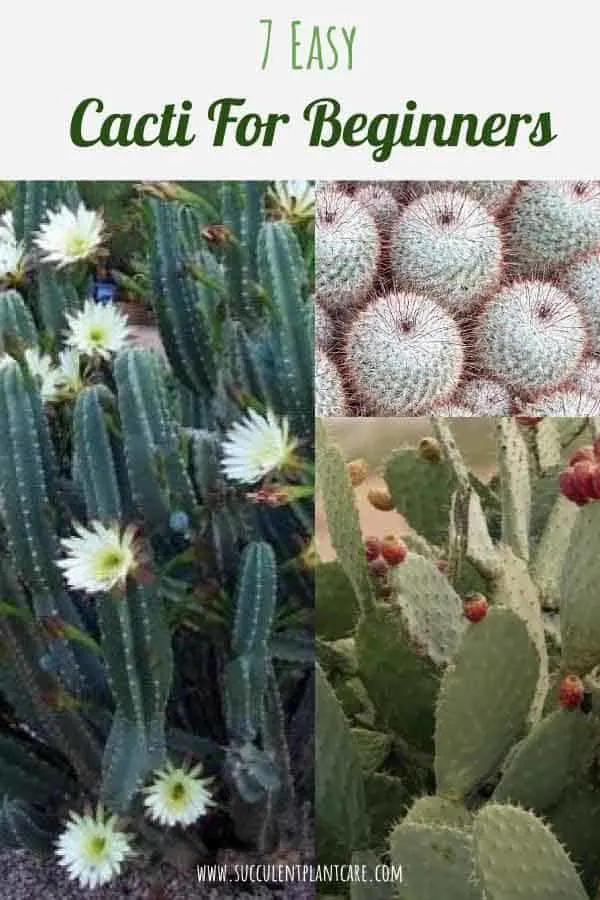My love for cactus plants have grown over the years. I started my collection from one succulent plant that quickly grew into many others. When visiting plant nurseries, we often find cacti and succulents grouped together or placed in the same planter.
A planter containing different assortments of succulents and cacti may be labeled as “Assorted Succulents”. As I increased my collection and knowledge of these amazing plants, I learned that cacti are actually succulents. A cactus is a unique subset of the succulent group.

The cactus family, or Cactaceae, is one of the largest families of succulents in the world. The word cactus is derived from the Greek word kaktos, meaning spiny plant. Cacti are fleshy plants that store water, making them part of the succulent group.
Generally speaking, all cacti are considered succulents but not all succulents are considered cacti. I was more intimidated with caring for a cactus than a succulent at first. But after succeeding with a few, I have learned that they are actually easy plants to care for and grow.
Just like succulents, cacti are drought tolerant and do not require a lot of water. They need a well draining potting mix and they like bright light. There are some cacti species that are easier to care for and some that are more challenging.
Here are 7 easy cacti species that are great for beginners:
Cereus
The genus Cereus contain over 30 different species. It used to be that any cactus with a very elongated body that are ribbed and columnar are classified under Cereus. Many of these plants have since been moved and placed under separate genus.
Cereus are typically tree-like columnar plants with well-defined ribs, and large spines. They can grow very large and tall. The flowers are nocturnal and fragrant, meaning they bloom at night, and are usually large and white.
Most cereus species are easy to care for and great for beginners, such as Cereus Hildmannianus (common names are Hedge Cactus, Queen of the Night, Andes Organ Pipe, Peruvian Apple). Originating from South America, cereus hildmannianus have 4-6 ribs and can grow up to 30 feet high (10 meters). Its stems can grow up to 6 inches (15cm) across. They are blue-green when young, then become lighter green with age.

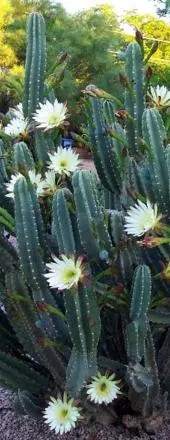
Echinopsis
Echinopsis is a large cacti genus. Native to South America, they are also known as Hedgehog Cactus, Sea-Urchin Cactus or Easter Lily Cactus. The species range from small cacti to large tree-like ones. Some popular ones are echinopsis oxygona or easter lily cactus and echinopsis aurea.
They are known for their large, dramatic and beautiful flowers with long flower tubes which appear much larger than the cactus they are coming from. Its name has Greek origins– ‘echinos’ means hedgehog or sea urchin, and ‘opsis’ means appearing.They are one of the easiest going cacti to care for and good for beginners.
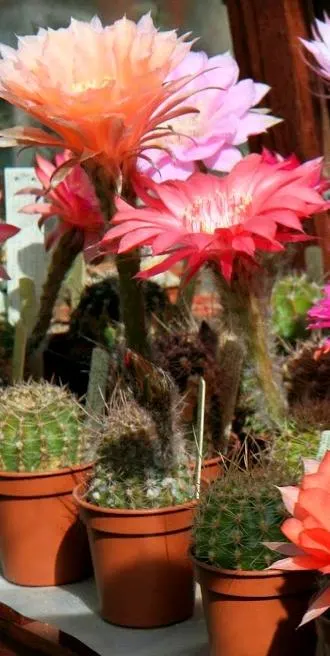
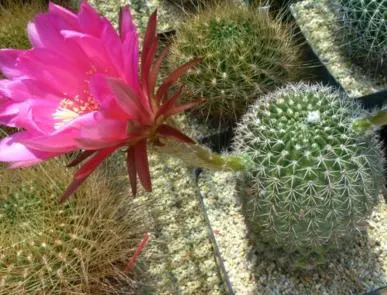
Ferocactus
Ferocactus, commonly known as barrel cactus, is a very popular cacti genus. They can grow very large, up to 10 feet tall (3 meters) tall and 3 feet (0.9 meters) wide. They are known for their cylindrical shape that are covered in ribs with long, sharp spines. They range across the south-west USA and northern Mexico regions. They can tolerate mild frost and intense heat, making them versatile plants that can be kept both outdoors and indoors.
A popular type of ferocactus is the ferocactus glaucescens or blue barrel cactus. They have 11-15 ribs and neatly distributed spines. Bluish green in color, they produce white fruits and light yellow flowers.
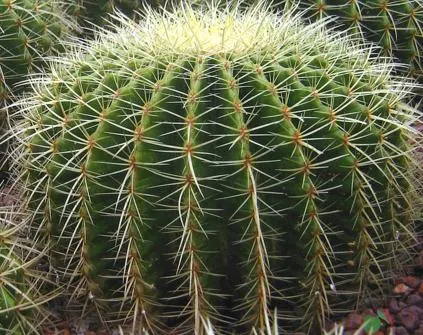
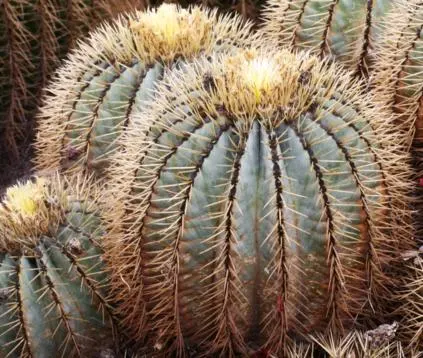
Mammillaria
Commonly referred to as ‘pincushion cactus’, mammillaria is one of the largest in the cactus family with about 250 species. They are also one of the most common in cultivation. The species vary from very small to large clusters. Most are native to Mexico, but can also be found in southwest USA, the Caribbean, South and Central America. Many mammillaria species are very easy to grow and will tolerate mild frost and extreme heat.
Some mammillarias have interesting common names such as: Powder Puff Cactus, Old Lady cactus, Golden Stars or Lady Fingers cactus.
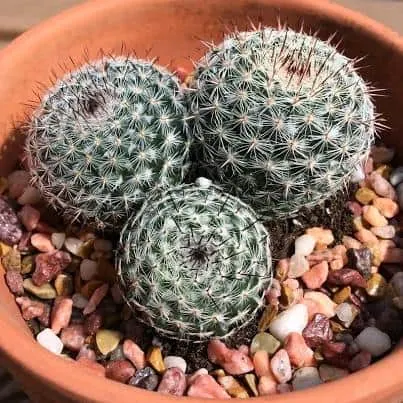
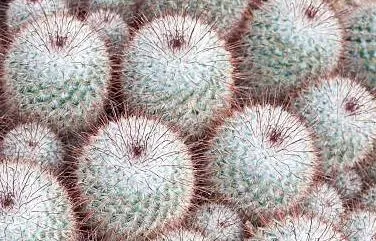
Opuntia
Opuntia has features that separate them from other cacti genus. They grow in joints or segments. Commonly called prickly pears, they have round, flat joints called pads. They are also fiercely armed with glochids or small, barbed spines. The pads can easily root and propagate on their own. Several species of prickly pears are cultivated for their edible fruits and are commonly consumed in India and Mexico. Most opuntia species are easy plants to grow and are considered invasive in some areas they are not naturally occurring.
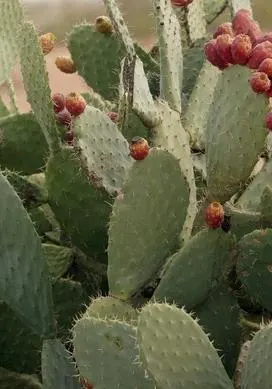
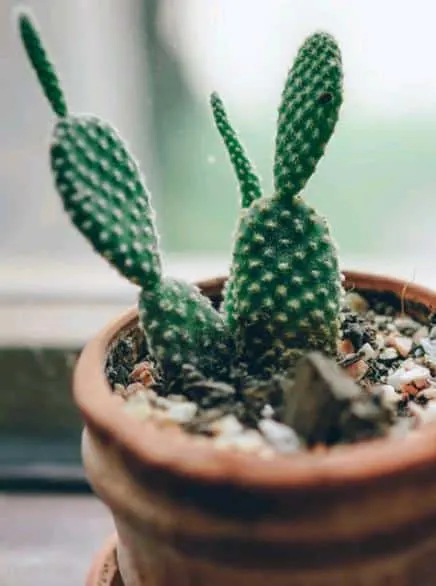
Parodia
Parodia species vary from short stemmed to tall columnar plants growing up to 3 feet (1 meter) tall. Their bodies are usually covered in spines. They are popular for their colorful flowers that last for months. They are native to Argentina, Uruguay, Paraguay and Brazil. Some species are frost-hardy and can tolerate mild frost but some need to be brought indoors when the temperature freezes.
Parodia Magnifica, also called ‘Ball Cactus’, can grow up to 6 feet (1.8 meters) tall and 18 inches (45 cm) wide. They are have spiny and hairy stems and they produce light yellow flowers in the summer.
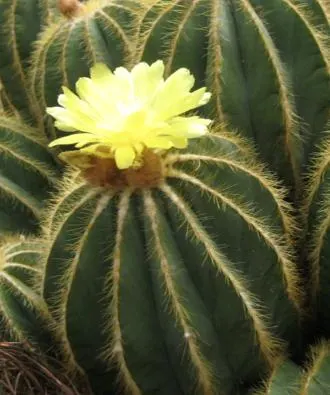
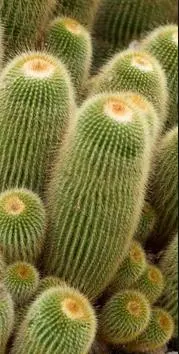
Rebutia
Rebutia has become popular mainly because of its freely flowering nature and small size. They produce flowers that have a wide range of colors and are usually large compared to the body of the cactus. They range from Bolivia to Argentina, and can form large clusters in cultivation. Some species can tolerate frost and grow well in cooler temperatures.
A popular one is Rebutia Muscula or Orange Snow Ball or White Haired Crown cactus. They are densely covered with furry white spines and produce bright orange flowers.
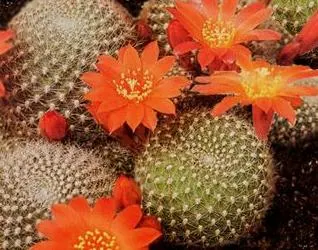
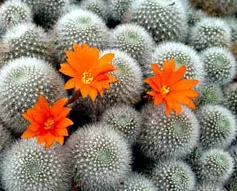
All of these species of cacti have individual growing needs, but they all share similarities in how to care for them.
They need these basics:
Soil
Good drainage is essential. A well draining potting mix with porous materials added like perlite and coarse sand for increased drainage is ideal
Water
In the winter, allow for rest period and cut down on watering to about once a month. You may not need to water at all if you live in a humid area. During the summer, water about every two weeks, more during intense heat, and less if the soil stays moist.
Light
Most need bright sunlight but full afternoon sun can still burn the plant. Very bright partially filtered light is best.
Fertilize
Fertilizing is not necessary especially if the potting mix is fresh. Use a ¼ to ½ strength diluted fertilizer during spring and summer months.
If you are wondering where you can purchase cacti and succulents online, please check out my Resource Page to get some ideas.
